Summary, abstract and full texts no. 109
Henri Goldberg and Philippe Mesnard: Editorial: In progress (in French - pdf)(in Dutch - pdf)
Dossier: La bande dessinée dans l'orbe des guerres et des génocides du XXe siècle
Coordinated by Fransiska Louwagie and Daniel Weyssow
Fransiska Louwagie and Daniel Weyssow: Presentation (in French - pdf)(in Dutch - pdf)
I. Propagande
Thierry Crépin: Les éditeurs de bandes dessinées en France sous l'occupation (pdf)
- During the 1940’s, the juvenile press was the main publishing medium for comic strips. The military defeat led to the emergence of new publishers, limited the circulation of the illustrated press, disrupted production centers and imposed submission to German and Vichy censorship. French publishers reacted to the unprecedented situation they faced in very different ways, ranging from compromise by established firms to a complacent acceptance of the "new times" by later arrivals.
- The art of propaganda, which consists of molding "good citizens", does everything in its power to unite hearts and minds and mobilize people around shared objectives. During the Second World War, Great Britain lived under the threat of invasion by the German enemy. The British government expected the population to make sacrifices, adapt to the demands of a period when penury was de rigueur and participate in the war effort. As entertaining supplements to radio broadcasts, cinema newsreels and articles published in the press, comic strips offered their readers an element of fantasy and consolation. They aimed not to frighten young people by making them anxious about the sufferings inflicted in totalitarian regimes, but rather to reassure them. But while their main purpose was to educate and entertain in wartime, comic strips also inevitably helped to inform, and to guide readers’ opinions.
- In 1942 the Dutch magazine Volk en Vaderland [People and Fatherland], the mouthpiece of the Dutch Nazi party which peddled the political beliefs propagated by the German occupier’s henchmen, published a weekly comic strip entitled "Rare, maar ware commentaren" ["Strange but true commentaries"]. In its 45 published and rather independent episodes its creator, Peter Beekman, commented on current events and developments. His portrayal of various "enemies" gives a picture of how the new publishing medium of the comic strip was used to inspire extreme racist attitudes. The main question examined in the article concerns the different stereotypes Beekman used to represent the Jews, his vision of the Jews and the possible impact of his antisemitic images. The article presents Beekman’s work in the context of the emergence of Dutch comic strips and analyzes the vivid presence of anti-Semitism in this specific case on the basis of six dominant themes.
II. Guerres et génocides du XXe siècle
- Hellé’s album bears witness to war according to the concept defined by Jean Norton Cru, by respecting unembroidered historical accuracy. It reflects the difficulty of describing a traumatic experience to children in a way which also commemorates that experience, and overcomes the difficulty by associating official statements from the belligerents’ headquarters with cryptic polychromic illustrations. Intertextuality is given prominence, while Hellé’s images are self-quotations relating to the toy-children characters in La Boîte à Joujoux, and the inter-iconography refers to photos from L’Illustration. The representation of the Great War corresponds to the sanctified image imprinted in collective memory, but temporal stratification filters the author’s personal view through the selected legends and texts, which act as frame for a panoramic image oscillating between primitive art and cartoon cinema. Illustrations tailored to a child audience play down the violence and achieve a miniaturization of the sublime.
- The Armenian genocide (1915-1916) has not featured strongly in the "ninth art", but its recent and increasingly emphatic recognition in the international arena has led to the publication of several comic strips on the subject between 1979 and 2010. At first these examined the Armenian question, subsequently showing the hovering shadow of genocide, and finally depicting the violence of the genocide itself in texts and images.
Yannick Malgouzou: Du récit familial au témoignage historique: Maus d'Art Spiegelman (pdf)
- "Maus" owes its critical and public success to the rigor of its approach, in which theory and practice, reflection and representation, question and enrich each other. Indeed, the author has created a dynamic form which transforms the narrative of an individual memory into the narrative of artistic creation. But this narrative of a difficult creation is in turn transformed into the narrative of a possible transmission of the experience of the genocide. These three narrative levels mix to display the difficulties of representation and communication inherent in the Jewish genocide, while at the same time showing how the work of art must transcend them by a set of aesthetic choices. So through the family narrative, Spiegelman builds a strongly individualized story, to which he gives a universal dimension by means of a set of strategies that exploit the resources of the comic strip.
Andreas Huyssen: Des souris ou des hommes ? La question de la mimesis d'Adorno à Spiegelman (pdf)
- Starting from the question of whether or not the Shoah can or should be represented, and from the flexibility of the concept of mimesis, Andreas Huyssen examines Art Spiegelman’s Maus as a work which has chosen to move as far as possible from the forms which are traditionally used for recounting a historical tragedy. In Spiegelman’s autobiographical work, the suicide of Artie’s mother figures as the event triggering Artie’s search for his origins, which leads him to question his father and then describe the years of wartime and deportations. The concept of mimesis, whose involvement in the process of civilization and paradoxical relationship to Bilderverbot (the prohibition of graven images) was postulated by Adorno, is used here as a means of overcoming the separation between the impossibility of expressing the events which the author/narrator wishes to express, and his need to escape from the state of melancholy in which he is plunged. In line with the tradition of US comics whose satirical aspect tends to wordplay such as "Mauschwitz", the author uses the portrayal of the characters as animals as an oblique approach to confronting his insurmountable feeling of loss.
Jonathan Haudot: Rire et Shoah: La réception de la BD Hitler=SS (pdf)
- In view of the scale of the tragedy, it may seem morally inappropriate, not to say antinomian, to associate the Shoah with laughter. But it has to be said that many artists, both Jewish and Gentile, have taken a humorous approach to the catastrophe. They include Romain Gary, Edgar Hilsenrath, and Roberto Benigni. In the case of Hitler = SS, a comic strip by Philippe Vuillemin and Jean-Marie Gourio, the reception in France was extremely hostile, its publisher and authors were accused and convicted of "racial insults" and "complicity in racial insults". This court case has only been described vaguely in comic strip history, so this article recounts and interprets the arguments put forward during the controversy and the trial resulting from the publication of Hitler = SS. Overall, the analysis sets out to explain the three major aspects of the album’s reception: the accused authors’ attempt to justify it by describing how it was conceived; the ambiguous interpretation of the work which resulted from its use of caricature and derision; and, finally, the implications of the way in which the album was disseminated.
Catherine Ojalvo: Séra face à la mémoire cambodgienne: le noir de la mémoire (pdf)
- Can the comic book, considered a priori as a "minor art", support and assume the role of testimony on the same level as the texts produced by Antelme, Kertesz or Levi? It is the validity of this question which we propose to consider in this contribution, by examining the productions of Séra, a Franco-Cambodian author of comic books who is also a painter and sculptor. We look at Séra’s portrayal of the genocide in three comic books which together form a sequence describing different periods of the Khmer Rouge regime in Cambodia. The analysis focuses in particular on the use of color throughout these comics.
- The fictional story portrayed in the graphic novel "Rwanda 1994 : Descente en Enfer" contains elements of the complex factual history of the Rwandan genocide. There are references in the text to both Rwanda’s heritage, which established the circumstances leading to the genocide, and France’s involvement in the "last genocide of the twentieth century". This article analyzes these allusions to the history of the Rwandan genocide as (re)presented in this unique literary medium.
- From April 6 to July 4, 1994, Rwanda was plunged in the turmoil of a genocide, but during that period the Western media were astonishingly silent on the subject. Indeed, it was not until August that the genocide became the main headline in Western magazines or newspapers. Since then films and graphic albums have seized on it, thus becoming involved in its mediatization and commemorative reconstruction. Why, and in what forms? Can suffering and death be treated as aesthetics? This article examines this question in terms of Jean-Philippe Stassen’s graphic novel "Déogratias" which raises the issue of commemorative construction in an original way. In "Déogratias" the artist has drawn on the techniques of journalism to tell the story of the Tutsi genocide and its social consequences. He chooses to focus his story/news report on the destiny of a young Hutu. From the viewpoint of historical investigation, following the career of this imaginary teenager makes it possible to reflect on the mechanisms of genocide and, above all, on the relationships between time and story, remembering and forgetting, and truth and subjectivity, and thus to show how a graphic album can play a part in building remembrance of the Tutsi genocide.
- Ari Folman and David Polonsky’s Waltz with Bashir: A Lebanon War Story (2009) represents a unique adaptation of a cinematic text into a graphic novel. Based on the eponymous award-winning animated documentary released a year earlier, the novel presents Folman’s autobiographical experience as a young Israeli soldier during the First Lebanon War (1982). This article contends that this adaptation subtly served the filmmaker to provide an amended testimony to his traumatic experience.
Varias
Christiane Hess: Félix Lazare Bertrand – Dessins du camp de Neuengamme (pdf)
- This article is a summary of the author’s master’s thesis. Art had a place in Neuengamme concentration camp, where a prisoner, Félix Lazare Bertrand, produced over 100 drawings. The article describes the conditions in which these drawings were created and also analyzes their social and communicative functions. After the war, the various uses made of the drawings gave rise to controversy.
Claudia Feld: Image, mémoire et disparition en Argentine (pdf)
- The forced disappearance of people, which became a systematic practice during Argentina’s last military dictatorship (1976-1983), may be defined as a series of actions carried by the armed forces and the security service: the abduction of designated individuals, their secret imprisonment, torture and murder, and the concealment of their corpses. To avoid leaving any visible traces of these actions, the army destroyed and hid documents which were likely to give rise to prosecutions. Nor are there any images documenting the conditions of the secret imprisonments and killings. Yet despite the lack of visual records, images played a central part in depicting and exposing these crimes, both during the dictatorship and subsequently. Thus, although the disappearances should have been the perfect way of wiping out all images, they nevertheless became known in Argentina and throughout the world thanks to images. What were those images? Who produced them? What issues of social memory do they raise? This article examines these questions on the basis of two works published recently in Argentina, by examining each audiovisual support studied separately: photography, documentary and fiction films and television. It is thus an initial approach to analyzing the complex relationship between memory, images and the disappearances which has developed in Argentina during the last 30 years.
Book reviews
- Janine Altounian, L’Intraduisible. Deuil, mémoire, transmission, Paris, Dunod, 2005 (pdf)
Review in French by Émilie Lochie - Henri Parens, Retour à la vie. Guérir de la Shoah, entre témoignage et résilience, Paris, Tallandier, 2010 (pdf)
Review in French by Adrien Beauduin - Louise L. Lambrichs, La littérature à l’épreuve du réel, Sarrebrück, Éd. Universitaires Européennes, 2010 (pdf)
Review in French by Marc Gjidara (Professor emeritus, University Panthéon-Assas – Paris II) - Bernard Sicot (coord.), La Littérature espagnole et les camps français d’internement (de 1939 à nos jours). Actes du colloque "70 años después", Université Paris-Ouest Nanterre-La Défense, Centre de recherches ibériques et latino-américaines, Groupe de recherches « Résistances et exils », 2010 (pdf)
Review in French by Geneviève Dreyfus-Armand - Actualité des revues historiques (pdf)
by Anne-Sophie Jacot (Department of Contemporary History at the Catholic University of Louvain-la-Neuve)
The journal is available on line at
openedition.org
All issues
-
No. 139 (10/2024) The Liberation
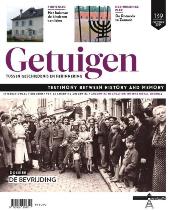
On the occasion of the eightieth anniversary of the liberation of Belgium, We are dedicating a theme issue of our magazine to the country's liberation.
Table of contents (French version)
Table of contents (Dutch version)No. 138 (04/2024) Trials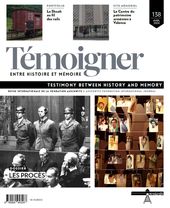
This dossier will deal with trials that have provided a legal answer to a demand for justice. Several cases will be addressed ranging from Istanbul and the Nuremberg Doctors' trial to the German policemen of the Brussels Jewish section and the gacaca trials in Rwanda.
Table of contents (Dutch version)
Table of contents (French version)No. 137 (10/2023) Children's Literature in Light of the Holocaust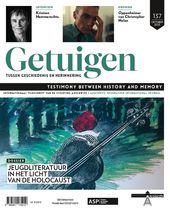
In France and Belgium, research into the relationship between children's literature and the Holocaust is rare, in contrast to the phenomenal attention in America (everyone knows Art Spiegelman's Maus) and in other English-speaking countries. Yet children's books depicting the Holocaust in words and pictures have been steadily gaining ground in post-war France and Belgium. While literary criticism and research still seem to be in their infancy, this dossier will show that critical analysis of this corpus is highly relevant for the future.
Table of contents (Dutch version)
Table of contents (French version)No. 136 (04/2023) The Executioners
The executioner has always fascinated and frightened. The perpetrators of mass crimes are those who carry out, facilitate or order the annihilation of a specific group. Issue 100 of Testimony: Between History and Memory, published in September 2008, examined the Nazi executioners. This dossier offers readers a historical and criminological approach to other genocides of the 20th century.
Table of contents (Dutch version)
Table of contents (French version)No. 135 (10/2022) Disobedience
This issue looks at the concept of disobedience in wartime. While the concept of civil disobedience may seem familiar in these times of endemic protest, there was a time when obedience was the rule. In a military context, disobedience was frequently followed by deadly consequences. This dossier focuses on three cases from the First World War and one from the Algerian War (1954-1962).
Table of contents (Dutch version)
Table of contents (French version)No. 134 (04/2022) The Killing of the ‘Useless’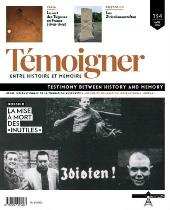
During the Second World War, the Nazi regime didn't just try to destroy the Jewish "race", which it considered dangerous. Before implementing the Final Solution, the Nazis massacred those who didn't fit in with their eugenic racial ideology and whom they considered inferior. In this dossier, we focus on the mentally and physically handicapped, systematic victims of Nazi pseudo-medical madness throughout the world conflict.
Table of contents (Dutch version)
Table of contents (French version)No. 133 (10/2021) 1918-1938: The politicisation of music in Europe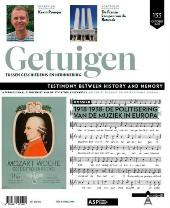
1918-1938: The politicisation of music in Europe
This dossier looks at the instrumentalisation of music by the political world between the wars. The cases are numerous and shed light on the way in which political propaganda was propagated in European musical culture.
Table of contents (Dutch version)
Table of contents (French version)No. 132 (04/2021) AKTION REINHARDT and AKTION ERNTEFEST
AKTION REINHARDT and AKTION ERNTEFEST
The Aktion Reinhardt saw approximately 1.8 million Polish Jews perish in the gas chambers of Bełżec, Sobibór, Treblinka and Majdanek between March 1942 and November 1943. The Jews who ‘escaped’ the gas chambers were shot in Majdanek, Trawniki and Poniatowa on 3 and 4 November 1943 during Aktion Erntefest. The dossier we are proposing takes stock of current research on the Aktion Reinhardt. This historical event has experienced a resurgence of interest among historians of the Shoah over the last fifteen years, thanks, among other things, to archaeological advances at the various sites concerned. We have come a long way since Yithzak Arad's pioneering work in 1987: Belzec, Sobibor, Treblinka: the Operation Reinhard Death Camps. The dossier highlights different perspectives to discuss current research related to the issue. It addresses the erasure of traces, the sociological perspectives of the executioners, the excavation of extermination sites and the most recent historiography.
Table of contents and abstracts (Dutch version)
Table of contents and abstracts (French version)No. 131 (10/2020) Historiography of the Second World War in the Far East
Historiography of the Second World War in the Far East
For many people, 8 May 1945 and the surrender of Nazi Germany is the final chapter of the Second World War. However, it is often forgotten that the months between May and September 1945 were decisive for the future of the world, as fierce fighting continued in the Pacific between the United States and the Japanese Empire until the latter’s unconditional surrender on 2 September 1945, the actual date of the end of the Second World War.Table of contents and abstracts (Dutch version)
Table of contents and abstracts (French version)No. 130 (04/2020) Reception of the Shoah and mentalities in Jewish and Christian circles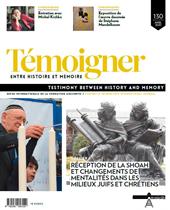
Reception of the Shoah and mentalities in Jewish and Christian circles
The reception of the Shoah has become, for all of humanity, a place of questioning and awareness. This dossier will aim to establish and evaluate the modalities and challenges of the transmission of the Shoah and to measure the resulting changes in identities and mentalities. What were the Catholic views on Judaism before and during the Shoah? What Jewish liturgies and interreligious rites exist for the commemoration of the Shoah in Israel and the United States? The evolution of mentalities in the Jewish world in relation to the Shoah will also be exposed through the analysis of the so-called Bitburg controversy, triggered by the visit of the American President, Ronald Reagan, to the German military cemetery of Bitburg (FRG) in May 1985. The Auschwitz Carmel affair (1985-1993) finally reveals the involvement of the Belgian and French Churches in the resolution of the conflict and is undoubtedly a key stage in the Church's 'teaching of esteem' with regard to the Jews. The historical answers provided in this dossier to the question of the Shoah may be decisive for the survival of Judaism and the relationship between Judaism and Christianity.
Table of contents and abstracts (Dutch version)
Table of contents and abstracts (French version)No. 129 (10/2019) Recognition of victims
Recognition of victims
In recent decades, the idea has gained ground that victims of mass crimes deserve recognition. This has become an essential category of our memorial culture. This dossier aims to take stock of this issue by looking at the broad spectrum of measures to ensure recognition, from simple remembrance to targeted judicial interventions, and by recalling the growing importance of the victim in international criminal justice. It returns to the problematic aspects of recognition when it leads to competition among victims.
Table of contents and abstracts (Dutch version)
Table of contents and abstracts (French version)No. 128 (04/2019) 25 years on, how to remember the Tutsi genocide
Kwibuka [Remember]. 25 years on, how to remember the Tutsi genocide
April 1994. Images of mutilated bodies are projected on European screens, originating from Rwanda. 25 years later, we remember.Table of contents and abstracts (Dutch version)
Table of contents and abstracts (French version)No. 127 (10/2018) Perpetuation of violence after 1918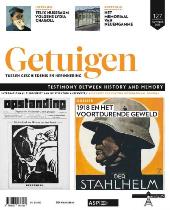
Perpetuation of violence after 1918
One hundred years ago, the First World War ended in November 1918. After four years of bloodshed, peace returns to Europe. At least, that was the impression of the victors at the time, and today it is also the impression of the commemorators who celebrate its centenary. The historical reality is more complex. At least until 1923, violence continued in the form of revolutions and counter-revolutions, wars and civil wars. The spirits also remain in the grip of violence on both the left and the right. The dossier proposes to define the contours of this Europe so strongly marked by the Great War, by evoking the culture of violence established by it and which, finally, degenerated into the total explosion of the Second World War.
No. 126 (04/2018) Questions about the future of remembrance work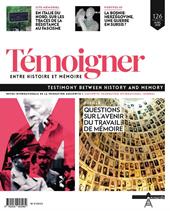
Questions about the future of remembrance work
On 20 and 21 January 2017, the seminar ‘Questions on the future of remembrance work’ was held in Esch-sur-Alzette, Grand Duchy of Luxembourg. The five articles in this dossier taken from the conference proceedings attempt to answer the following questions: How can we build a critical memory of the Shoah, free of myths and national fragmentation? How do we anticipate the absence of direct witnesses? In the future, who transmits what, and how?
No. 125 (10/2017) Persecution of homosexuals by the Nazis
Persecution of homosexuals by the Nazis
Historical knowledge of the Nazi persecution of homosexuals and their deportation has made significant progress in recent years due to the increase in research on the subject. In this dossier, recognised researchers as well as young doctoral and PhD students take the floor. The insights they provide concern both the question of the singular destiny of homosexual men and women during the Second World War and the way in which the memory of the homosexual victims of Nazism has evolved since the end of that war.
No. 124 (04/2017) Music in the camps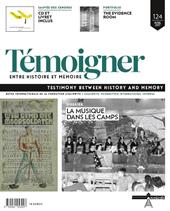
Music in the camps
Music was an integral part of the concentration camp world, Nazi and otherwise. What kind of music was composed and performed, and what exactly was its role in the camps? A factor of survival and resistance for the prisoners, a way for them to express their hope and their humanity - or, on the contrary, an instrument of oppression exploited by the executioners? What is the function of music in the work of memory following the experience of extreme violence and suffering? This dossier proposes to explore these issues.
No. 123 (10/2016) Translating Memory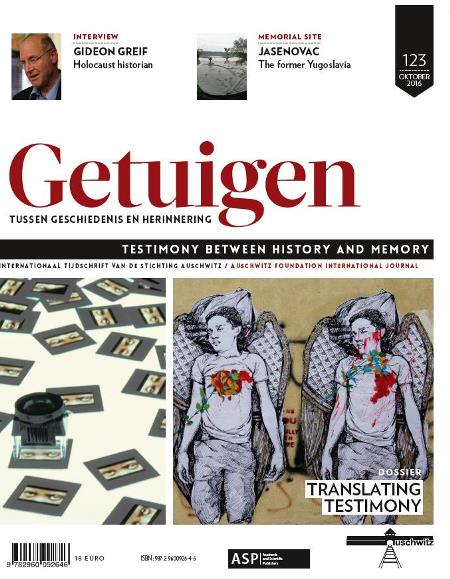
Translating Memory
Presentation of the dossier: What is the relationship between testimony, defined as a more or less ritualized firstperson account of political violence, and translation? Correspondingly, how does the translator position herself towards the witness? Can the translator be, or become, a witness? How, when and why are testimonies translated? Which linguistic and discursive strategies do translators resort to when faced with ethically challenging texts? Which role do they play exactly in the transmission of the historical knowledge, cultural values or social critique conveyed by the testimony? Does translation weaken or rather reinforce the relevance and impact of the original statement? How important is translation in literary, political and institutional settings? Do these specific settings determine translation practice in significant ways? To which extent can subsequent processes of transcription, editing, translation and archiving affect the source text? And how accurate are the boundaries we draw to distinguish witnessing from translating, documentary from literary testimony, the original from its translation? These are the main questions we intend to explore in our dossier.
No. 122 (04/2016) Revisionism and negationism
Revisionism and negationism
Strictly speaking, Holocaust denial is the ‘doctrine denying the reality of the Nazi genocide of the Jews, including the existence of the gas chambers’; by extension, the term refers to the denial of other genocides and crimes against humanity. The literature on Holocaust denial is extensive. There are studies on the subject in many countries as well as biographies of deniers. The argumentative and rhetorical strategies of the deniers have been widely deciphered. Websites systematically dismantle their fallacies. While there is no shortage of reliable information on the phenomenon, it is essential to return to it again and again, for several reasons.
No. 121 (10/2015) Extreme violence on stage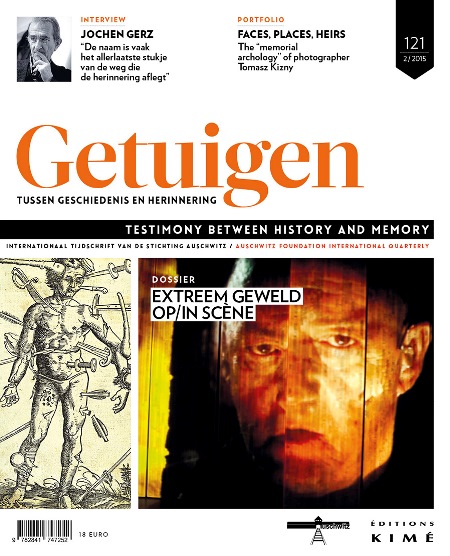
Extreme violence on stage
Extreme violence shows itself. It bursts through the screens. It surfs from one style and medium to another: news reports, documentaries, fiction, arts of all kinds. Yet theatre distinguishes itself from this mêlée all while constantly returning to the subject. Differently. Linked from its origins to the representation of cruelty and having “miraculously” escaped the often sterile polemics on the interdiction (or not)... of representing the Holocaust, it is still with the same youthfulness that theatre deals with extreme violence today, relentlessly pursuing the articulation of ethics and aesthetics.
No. 120 (04/2015) What future is there for the memory of the Armenian genocide?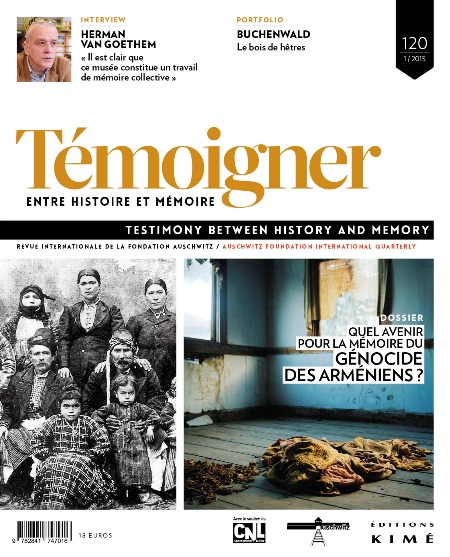
What future is there for the memory of the Armenian genocide?
The 1915 genocide of Turkish Armenians still stirs up numerous debates, controversies, declarations of principle, statements and counter-statements, and even negation. However, as we speak, ties are being established more and more openly, bridges are built and bonds strengthened between the Armenian and Turkish communities. Is reconciliation possible?
No. 119 (12/2014) 70 years ago, Auschwitz. Looking back on Primo Levi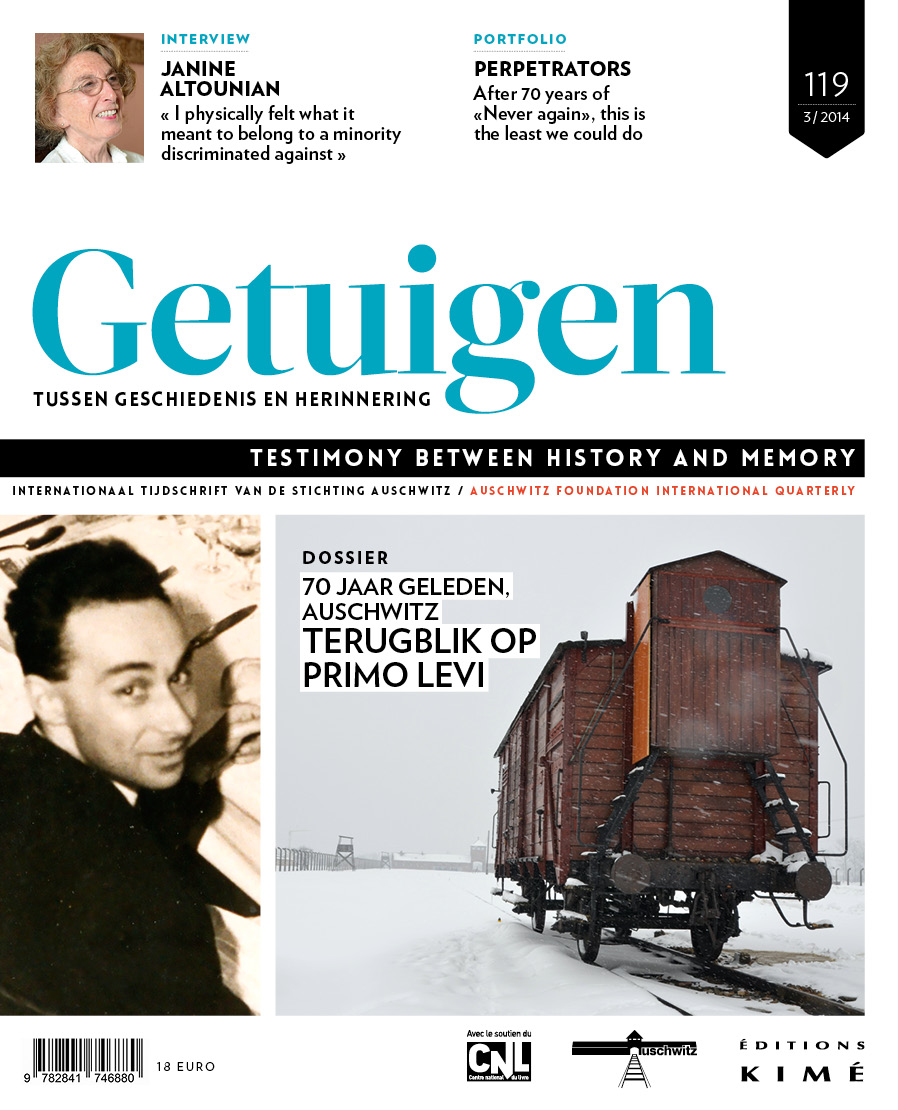
70 years ago, Auschwitz. Looking back on Primo Levi
27 January 1945. Seventy years ago the first soldiers of the Red Army marched into Auschwitz. One might argue that the camp was “liberated” then, but the truth is that neither Auschwitz, nor any of the other Nazi camps, was ever a priority to the Allied Powers. Primo Levi was one of the few survivors who knew how to hide and escape the enforced evacuation of the camps. With this dossier, we want to cast light on the complex figure that Levi was: a Jew, a deportee, a chemists, a witness, and a writer. It sets out to study his oeuvre and his interpretation of the notions of “resistance” and “engagement”, in order to understand how he eventually became a “professional survivor”, as he once described himself.
No. 118 (09/2014) Dictatorship and terror in Argentina, Chile and Uruguay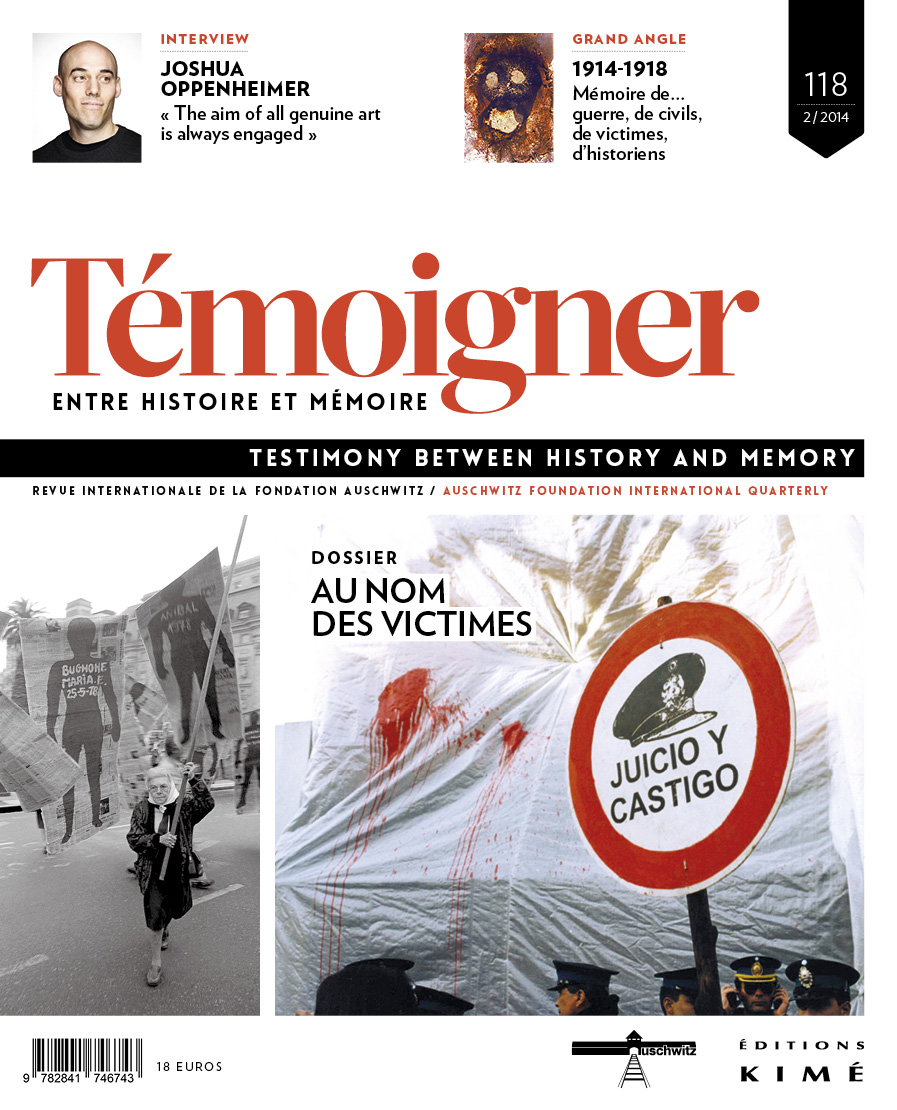
In the name of the victims. Dictatorship and State terror in Argentina, Chile and Uruguay
During the 1970s and 1980s, Argentina, Chile and Uruguay were in the grip of military dictatorships. The process of democratic transition that followed the long period of state terror involved the construction of particular narratives and memories, leading to a reconfiguration of the past. Despite local differences, this process is very much centered at the figure of the victim – a figure the articles in this dossier, collected by Claudia Feld, Luciana Messina and Nadia Tahir, set out to explore.
No. 117 (03/2014) Friends? Enemies? Relationships between memoriesAmis ? Ennemis ? Relations entre mémoires / Vriend of vijand? Hoe herinneringen zich tot elkaar verhouden [Friends? Enemies? Relationships between memories]
Much has been said and written about group memories, limiting their mutual relationships and history to conflicts, “wars”, competitions, or strategies for eclipsing or silencing. These terms have now become the platitudes of a kind of more general doxa about collective and cultural remembrance. This dossier proposes a critical reading of those terms and of that doxa by questioning the emergence, constitution, and inter-relating of different exemplary memories of the major violent episodes of the 20th century. It will address the relationships that those memories can maintain with other memories with which they share, if not the same event, at least similar characteristics and concerns.
No. 116 (09/2013) Memory tripsVoyages mémoriels / Herdenkingsreizen [Memory trips]
Should we fear what has been grouped under the term “memorial tourism”? Or should we take this as a reality of our time? Can any visitor, group or individual, nowadays be absorbed in the category of “tourist”? Or is this category a remote intellectual reduction of a personal experience that everyone is aiming during his visit? The problem appears in a somewhat different light when we think of tours for young people supervised by adults, usually teachers. This dossier gives the floor to historians and teachers with experience in the field.
No. 115 (03/2013) Memory construction in SpainL’Espagne en construction mémorielle / Spanje en de opbouw van de gedachtenis [Memory construction in Spain]
This dossier’s objective is to provide a benchmark for understanding the plural identities and relationships between memories and representation forms in contemporary Spain. Indeed, it is necessary today to take a fresh look not only on the stratified memories of the civil war, exile and the Franco repression, but also on the reception of other memories such as that of the Holocaust, and to propose new readings. We propose to highlight the conflicting or fruitful tensions between official actions, initiatives of associations and of artistic events.
No. 114 (12/2012) Memorial SitesSites mémoriels / Gedenkplaatsen [Memorial Sites]
Memorial sites constitute the concrete trace of European remembrance and history of the twentieth century. But what do they look like today? Exhibition and conservation criteria have changed during the last ten to fifteen years, like advances in historical research have changed the way we read and reconstruct past events. This is not only due to the fact that we have moved from a past history written by witnesses to a history written by professional historians. A new consciousness has emerged concerning transmission methods (memory education), and archeology has strengthened historical research. We tore off the veil of ideology that often influenced and prescribed the way we imagined permanent exhibitions, conservation and visits. Can we say we have entered a new era in memory transmission? It remains, in many ways, an open bet on the present and the future.
No. 113 (09/2012) The Taboos of German HistoryLes tabous de l'histoire allemande / De taboes van de Duitse geschiedenis The Taboos of German History]
The most painful or ambiguous periods in twentieth-century German history are characterized by numerous taboos, expressed in literature, photography and film as so many “returns of the repressed”. These studies focus in part on problems of antisemitism, and thus on the relationship of German-speaking societies to the Shoah. They also examine the way in which those societies confronted the violence they suffered, such as bombing, fleeing from the Red Army and the expulsions, and mass rapes.
No. 112 (06/2012) Children of the Spanish Civil WarLes enfants de la Guerre d'Espagne. Expériences et représentations culturelles / De kinderen van de Spaanse Burgeroorlog. Ervaringen en culturele voorstellingen [Children of the Spanish Civil War: Experiences and Cultural Representations]
The dossier in this issue deals with the experiences and cultural representations of childhood during the Spanish Civil War. It aims to help towards a better understanding of that conflict, which tore apart a population living on the same territory, by confronting the experiences of Spanish children who lived through it – as expressed in various forms during or after the war – with representations of those same children, particularly those coming from adults.
No. 111 (12/ 2011) Dangerous Game between Art and PropagandaArt & propagande : jeux inter-dits / Gevaarlijk spel tussen kunst en propaganda [Dangerous Game between Art and Propaganda]
Since the media came into existence, political institutions from political parties to governments have used them to promote their image, in order to win the support of the public they addressed. Authoritarian powers use the media as a means of consolidating their domination. But how can artists take part in propaganda, whose purposes are the opposite of those generally attributed to art? Does that mean setting aside their vocation, or do they themselves distort that vocation?
No. 110 (10/2011) Displacements, Deportations, ExileDéplacements, déportations, exils / Volksverhuizingen, deportaties, verbanningen [Displacements, Deportations, Exile]
States and criminal groups exploit population displacements to isolate or get rid of certain populations. In addition to being denied their normal rights, these populations lose visibility and are deprived of their reference points and social frameworks. In this way it is possible to make them the victims of constraints (deterritorialization, forced labor…) or violence (famine, massacres genocide…). These developments have spread on an unprecedented scale since the First World War and continue to grow worldwide. But there is also a dimension of remembrance to this reality: memories of these displacements are now being expressed in literature, and in exhibitions and museums. This dossier examines the contemporary double aspect of history and memory.
No. 109 (03/ 2011) 20th Century Wars and Genocides in Graphic Novels and Comic StripsLa bande dessinée dans l'orbe des guerres et des génocides du XXe siècle / Twintigste-eeuwse oorlogen en genociden in het stripverhaal [Twentieth Century Wars and Genocides as Portrayed in Graphic Novels and Comic Strips]
No. 108 (09/2010) How Documentaries Handle HistoryLe traitement de l'histoire dans les documentaires filmiques / De behandeling van de geschiedenis in de documentaire film [How Documentaries Handle History]
No. 104 (09/2009) Anti-fascism Revisited: History, Ideology, RemembranceL'Antifascisme revisité. Histoire – Idéologie – Mémoire / Nogmaals antifascisme. Geschiedenis, ideologie, gedachtenis [Anti-fascism Revisited: History, Ideology, Remembrance]
No. 103 (06/ 2009) Nazi Crimes and Genocides on the ScreenCrimes et génocides nazis à l'écran / Nazimisdaden en genociden op het scherm [Nazi Crimes and Genocides on the Screen]
No. 102 (03/ 2009) The Portrayal of Political Criminals in Films, Plays, Literature...Criminels politiques en représentation. Arts, cinéma, théâtre, littérature, médias / De representatie van politieke misdadigers. Kunst, film, theater, literatuur, media [The Portrayal of Political Criminals in Films and Plays, in Literature and in the Media]
No. 101 (12/2008) How to Educate, How to Remember?Quelle pédagogie, pour quelle(s) mémoire(s) ? / Welke pedagogie, voor welke herinnering(en)? [How to Educate, How to Remember?]
No. 100 (09/2008) Questions about the “Executioners”Questions de « bourreaux » / De kwestie van de “beul” [Questions about the “Executioners”]
Contact
Auschwitz Foundation – Remembrance of Auschwitz
Rue aux Laines 17 box 50 – B-1000 Brussels +32 (0)2 512 79 98
+32 (0)2 512 79 98 info@auschwitz.be
info@auschwitz.be
BCE/KBO Auschwitz Foundation: 0876787354
BCE/KBO Remembrance of Auschwitz: 0420667323
Office open from Monday to Friday 9:30am to 4:30pm.
Visit only by appointment.
![]()
![]()
![]()
![]()
![]()
Become a member
To become a member of Remembrance of Auschwitz ASBL, please contact us and transfer the sum of €50.00 to our account IBAN: BE55 3100 7805 1744 – BIC: BBRUBEBB with the communication: ‘Membership fee 2025’. The membership includes two issues of 2025 of our scientific journal.
DONATIONS
Donations of €40.00 or more (in one or more instalments) qualify for tax exemption for Belgian taxpayers.
In communication, please specify that it is a ‘Donation’ and mention your National Number which is required since 2024 to benefit from the tax exemption.
Subscribe
Error : Please select some lists in your AcyMailing module configuration for the field "Automatically subscribe to" and make sure the selected lists are enabled









































